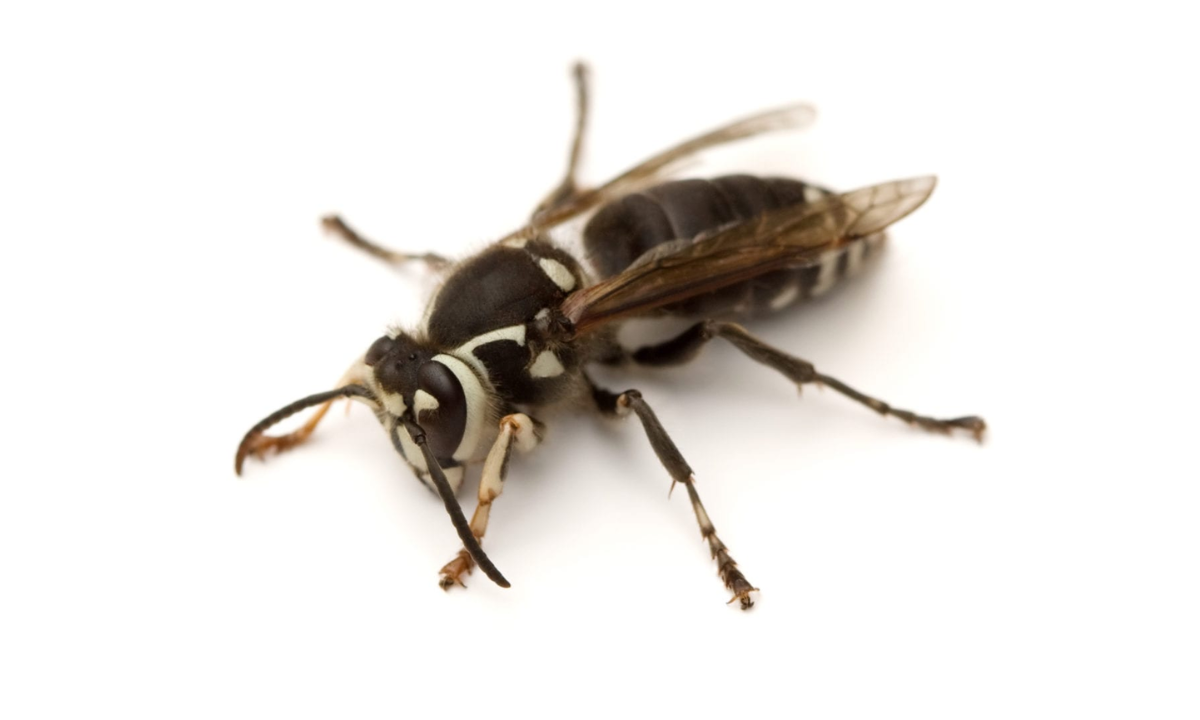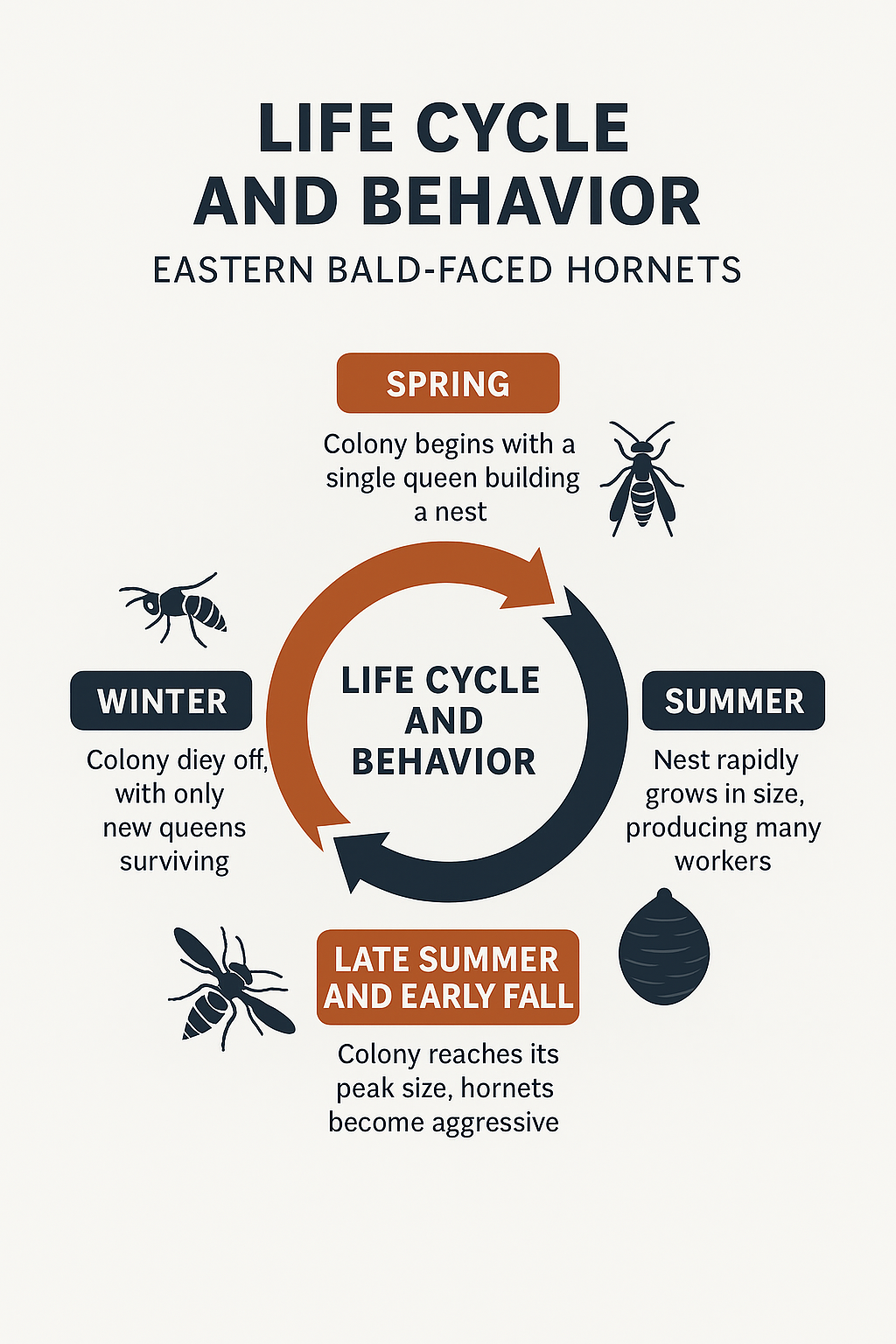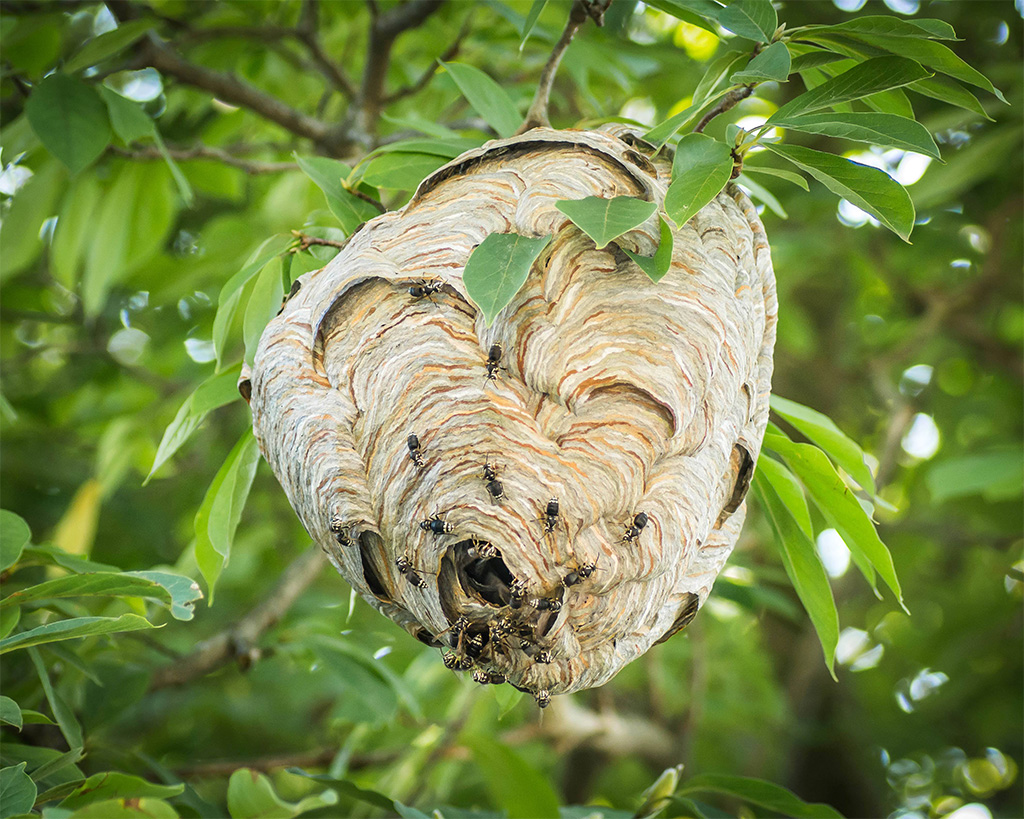Bald-Faced Hornets

Eastern Bald-Faced Hornets in Massachusetts
While they share similarities with yellow jackets, Eastern Bald-Faced Hornets (Dolichovespula maculata) are a distinct species with unique behaviors and nesting habits. Despite the name, these hornets are not true hornets at all; they are a type of wasp closely related to yellow jackets. Their appearance, nesting locations, and defensive behavior make them a pest homeowners need to be aware of—especially during late summer when colonies reach their peak size.

How Are Bald-Faced Hornets Related to Yellow Jackets?
Bald-faced hornets belong to the same genus (Dolichovespula) as some yellow jacket species, meaning they share similar social structures and life cycles. Both are:
Social wasps that live in colonies with a queen and workers.
Aggressive defenders of their nests, capable of stinging multiple times.
Predatory insects, feeding on other pests such as flies and caterpillars.
However, bald-faced hornets differ in a few key ways:
Appearance: They have black bodies with white markings on the face and thorax (hence the name “bald-faced”).
Nesting habits: Unlike many yellow jackets that nest underground, bald-faced hornets build large paper nests in trees, shrubs, and sometimes on buildings.
Size: They are slightly larger than yellow jackets, measuring around ¾ inch long.
Identifying Bald-Faced Hornets
Bald-faced hornets are easy to recognize due to their distinctive black-and-white coloration. Their nests are equally notable: large, oval-shaped, and covered in a papery material, often hanging high in trees or on structures. These nests can grow to the size of a basketball by late summer and house several hundred workers.
Are Bald-Faced Hornets Dangerous?
Yes. Like yellow jackets, bald-faced hornets are territorial and will aggressively defend their nest when threatened. They can sting repeatedly, and their venom can cause painful swelling. For individuals allergic to stings, even one encounter can be dangerous.
Because their nests are often in elevated or difficult-to-reach locations, attempting to remove them without professional help can be extremely risky.

Life Cycle and Behavior
The colony begins in spring, when a single queen builds a small nest and lays eggs. By summer, the nest expands rapidly, with hundreds of workers hunting insects and foraging for food. In late summer and early fall, the colony reaches its largest size, and hornets become more aggressive as they defend their nest. Once winter arrives, the colony dies off, leaving only new queens to overwinter and start the cycle again in the spring.

Preventing Bald-Faced Hornet Problems
While it’s difficult to prevent hornets entirely, you can reduce the likelihood of them nesting near your home by:
Inspecting your property regularly during spring to spot early nests.
Keeping garbage bins sealed to avoid attracting foraging workers.
Trimming shrubs and trees near your home to reduce nesting opportunities.
If you discover a nest, do not attempt to remove it yourself—hornets will respond aggressively to disturbances.
ServPest’s Eco Friendly Hornet Removal
Bald-faced hornet nests require careful handling. ServPest uses protective equipment and targeted treatments to eliminate nests safely and prevent future infestations. Our team ensures nests are removed without putting you, your family, or your property at risk.

FAQs About Bald-Faced Hornets
They can be equally aggressive, particularly when their nest is disturbed.
No. Each nest is abandoned in winter, with only new queens surviving to build new nests the following spring.
Yes, they help control populations of other insects, including flies and caterpillars.
They have been known to chase intruders for several yards away from the nest.
Stay Safe and Leave Hornet Removal to the Experts
Barnstable County, MA
Plymouth County, MA
Mon - Fri 7:00 am - 7:00 pm
Sat 8:00 am - 3:00 pm
Sun: Closed
Operation Hours: Mon-Sat: 7am - 7pm
Office: (508) 815-4842
Alternate: (508) 815-3114
info@servpest.com

